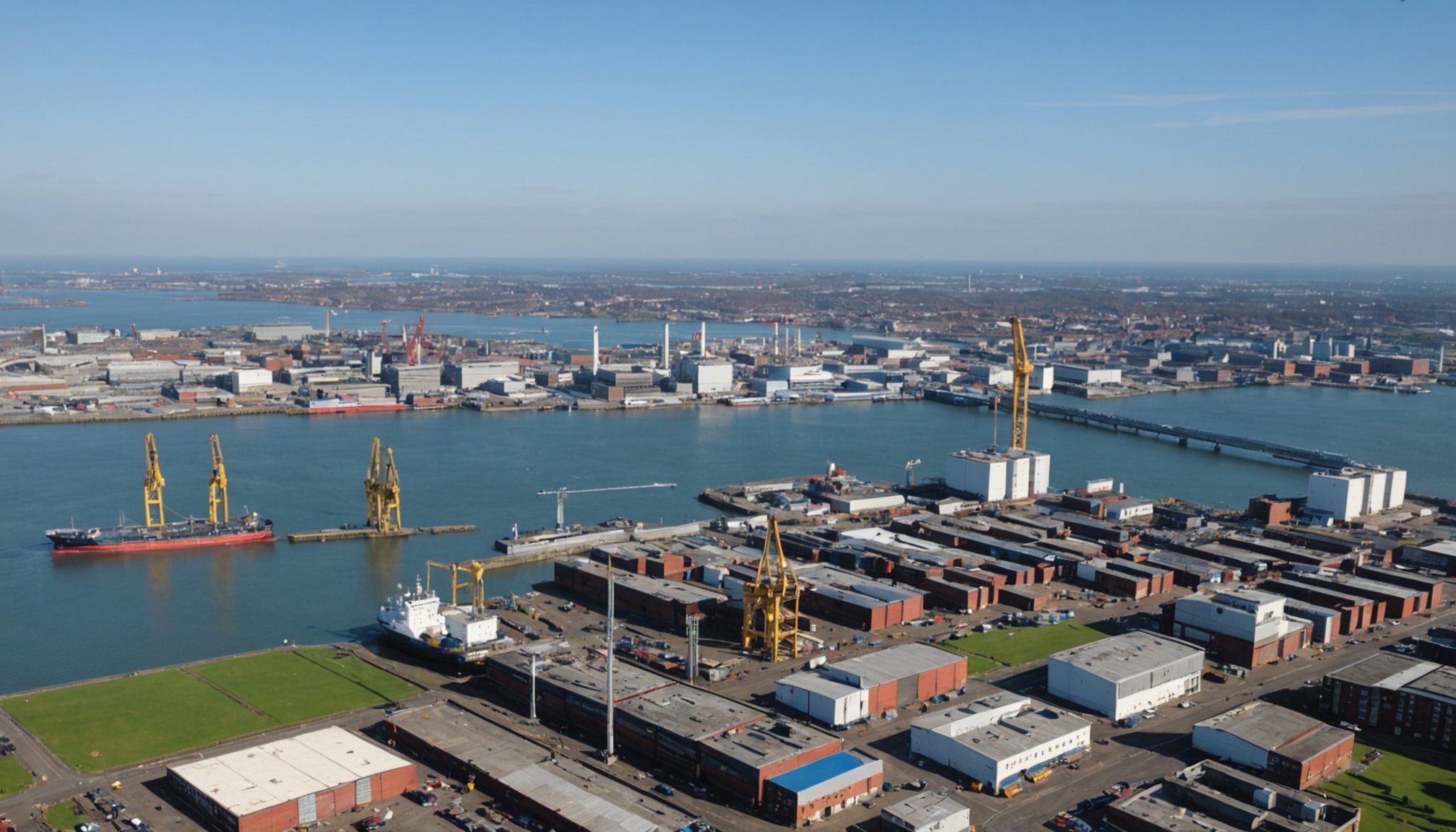Overview of Cost-Saving Strategies in Manufacturing
In the manufacturing sector, implementing effective budget-saving strategies is crucial for maintaining competitive advantage. The economic climate in Portsmouth, like many other areas, has emphasized the need for manufacturers to enhance their manufacturing efficiency. As businesses navigate the current economic challenges, focusing on reducing operational costs becomes increasingly important.
Understanding the relationship between efficiency and cost reduction is key. By streamlining production processes and minimizing waste, manufacturers can significantly lower expenses. This not only improves profit margins but also ensures long-term sustainability. Efficient resource management allows manufacturers to allocate funds where they are most needed, balancing cost and quality effectively.
In parallel : Key approaches to developing impactful remote work policies in birmingham”s it industry
Modern technological advancements play a pivotal role in bolstering manufacturing efficiency. Automation and data analytics enable companies to optimize operations, further cutting costs. Additionally, investing in energy-efficient equipment can lead to significant savings over time, aligning with both financial and environmental goals.
In summary, budget-saving strategies are indispensable in today’s manufacturing landscape. By prioritizing efficiency, companies can thrive amidst economic pressures, fostering growth and resilience. As manufacturers continue to explore these strategies, they are better positioned to withstand the challenges of the industry while maximizing their potential.
This might interest you : Effective mental health initiatives: innovative strategies for corporate offices in london
Innovative Budget-Saving Techniques
Exploration of innovative approaches in budget management can lead to substantial savings. One such approach is the integration of lean manufacturing principles. These principles focus on reducing waste and improving processes by maximizing value using minimal resources. Many organizations implement lean techniques to streamline operations, such as the just-in-time production system, which ensures inventory meets demand without excess.
Moreover, the adoption of automation technologies stands out as a significant method for reducing costs. Automated systems can handle repetitive tasks more efficiently than manual labor, leading to reduced labor costs and fewer errors. This efficiency is often seen in industries such as automotive and electronics, where robotics play a crucial role in assembly lines.
Another key factor in these efficiency techniques is the importance of employee training. By equipping employees with skills to use new technologies effectively, businesses can ensure smoother transitions and gain full benefits from automation. Well-trained staff can quickly adapt to new systems and contribute to increased productivity and efficiency.
These strategies embody innovative approaches that not only save costs but enhance overall operational efficiency, thereby providing a competitive edge in the market.
Case Studies from Portsmouth Manufacturing Firms
Exploring local examples of success, Portsmouth firms offer valuable insights into effective manufacturing strategies.
Company A: Streamlining Operations
Company A, a leader in innovation, grappled with inefficiencies in its production line. They tackled these challenges by automating key processes, implementing real-time analytics, and revamping supply chain management. These changes resulted in a dramatic reduction in production time and a significant increase in productivity. The key takeaway for other manufacturers is the importance of leveraging technology to improve operational efficiency—laying the groundwork for sustainable growth.
Company B: Sustainability Practices
Company B adopted comprehensive sustainability initiatives, focusing on energy efficiency and waste reduction. By implementing cutting-edge technologies like solar power and recycling systems, they achieved considerable cost savings and increased operational efficiency. Sustainable practices in manufacturing offer dual benefits: reduced environmental footprint and lowered operational costs, promoting long-term financial health without compromising on quality or output.
Company C: Resource Optimization
Through innovative techniques, Company C has greatly reduced material waste. Emphasizing supply chain management, they successfully aligned procurement and inventory processes, realizing cost savings and heightened efficiency. These activities translated into quantifiable results, reducing waste by 30% and cutting costs by 20%, underscoring the potential of resource optimization in driving manufacturing success.
Statistical Data Supporting Budget Strategies
In Portsmouth, understanding manufacturing costs is vital. Recent statistical analysis reveals key numbers that are reshaping budget strategies. By delving into these statistics, we can comprehensively evaluate how efficiency can be maximised. For instance, a detailed analysis indicates that firms adopting cost-saving strategies experience a notable decrease in operational costs, sometimes by up to 20%.
Efficiency metrics also play a critical role in assessing progress. These metrics, derived from thoroughly researched studies, highlight the efficiency of implemented strategies. For example, businesses that leverage detailed statistical analysis have shown improvements in resource usage and overall productivity. This underscores the importance of meticulously evaluating manufacturing costs to identify potential areas for savings.
Now, what about the big question: How significantly do budget-saving strategies affect firms? A comparative analysis of companies before and after implementing these strategies provides enlightening insights. These analyses show that firms often see a boost in profit margins and operational efficiency. Factors such as reduced resource wastage and better time management, evident in efficiency metrics, contribute to these improvements. Adopting a strategic budget approach allows businesses to not only cut costs but also sustain growth and competitiveness in a challenging market.
Actionable Steps for Implementation
Adopting budget-saving technologies can be a game-changer for manufacturing operations. Begin by conducting an efficiency audit. This helps identify areas where costs can be slashed without compromising on quality. Begin with a review of energy consumption, workforce utilisation, and equipment performance. Use this audit to pinpoint inefficiencies and areas ripe for improvement.
Once you have a clear understanding of your current operations, incorporate practical strategies. Invest in modern machinery that offers both efficiency and sustainability. Consider IoT solutions to monitor equipment in real-time, reducing downtime and maintenance costs.
For those in Portsmouth, a wealth of tools and resources are available. Local manufacturing associations often provide workshops on implementation steps for advanced technologies. Furthermore, local government initiatives may offer grants or tax incentives for adopting green technology.
Implementation steps should be meticulously planned:
- Map current processes against best practices
- Integrate budget-saving technologies gradually to minimise disruption
- Train staff adequately to ensure smooth transition
By following these steps, manufacturers can effectively streamline operations, reduce waste, and bolster their bottom line while staying competitive in an ever-evolving industry landscape.
Emphasizing Sustainability in Budget Strategies
Incorporating sustainable practices into budget strategies not only benefits the environment but can also lead to significant cost savings. Many companies may wonder: “How do sustainable practices align with our budget goals?” The answer lies in the long-term savings and efficiency gains these methods can provide.
Eco-friendly strategies often involve using materials and processes that minimise waste and reduce energy consumption. For example, switching to energy-efficient lighting and machinery can substantially lower electricity bills. Additionally, the use of recyclable and biodegradable materials in manufacturing processes can cut down on waste disposal costs.
There are numerous benefits to integrating sustainability into cost-saving strategies. Firstly, companies can enhance their brand image and attract environmentally-conscious consumers, potentially increasing market share. Secondly, by investing in sustainable technologies and practices, businesses can future-proof themselves against regulatory changes and resource scarcity.
Long-term savings are evident in several areas of sustainable practices. Reduced energy and resource use, decreased waste management expenditures, and improved operational efficiency contribute to lowering overall costs. Over time, these savings can provide a competitive edge, leveraging the company’s commitment to sustainability for not just economic, but also environmental benefits.










